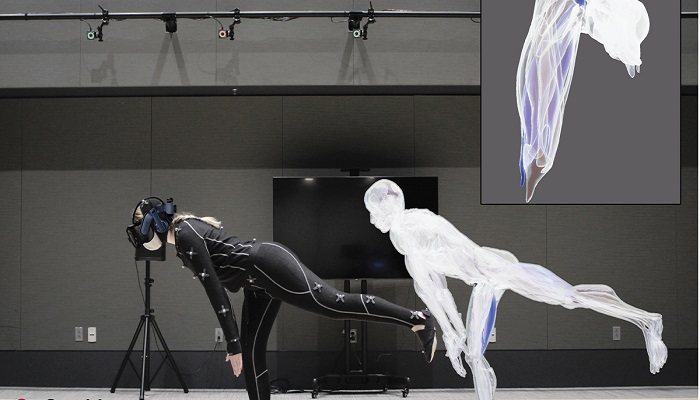Researchers from MIT and Massachusetts General Hospital developed a motion and muscle engagement monitoring system for unattended physical rehabilitation, which they claim may aid in the treatment of injuries and improve the mobility of seniors and athletes.
Physical rehabilitation is beneficial for problems associated with disabilities, but there aren’t enough physical specialists to go around.
A sensor-based wearable device and a virtual reality platform called MuscleRehab were developed by researchers from the MIT Computer Science and Artificial Intelligence Laboratory and Massachusetts General Hospital to enable better information-unmonitored rehabilitation for athletes recovering from injuries, patients undergoing physical therapy, or those with physical-limiting illnesses.
The software computes muscle engagement and displays it on an image with a virtual muscle skeleton. With a tracking suit, a virtual reality headset, and an imaging technology called electrical impedance tomography, patients may watch themselves perform while working with a physical therapist. The researchers say studies of the system show that monitoring and visualising muscle involvement during unescorted physical rehab can enhance therapeutic accuracy and post-rehab evaluations, as well as possibly prevent re-injury. They are getting ready to present their work in a formal setting for the first time.
The lead author of a publication about MuscleRehab at MIT, Junyi Zhu, said in a release, by actively assessing deep muscle engagement, they can detect if the data is anomalous relative to a patient’s background, providing insight into the prospective muscle trajectory.
The technology offers a training programme with previously recorded baseline criteria for the programme and broadcasts the avatar while real-time muscle activity is being captured. Patients undertake numerous activities that assess quadricep, sartorius, hamstring, and adductor activity while wearing the tracking suit and VR to record their 3-D movement data.
Two straps with electrodes are attached to the user’s upper thigh and used with the EIT sensing board to collect 3D volumetric data. The EIT sensing data displays dynamically stimulated muscles on the screen via motion capture technology, with muscles getting darker as they get more engaged.
With and without the EIT wearable, the group compared the exercise accuracy. Their image collaborates with a physical therapist in both scenarios. Which muscle groups were expected to be used during each exercise was clarified by a qualified physical therapist. They contrasted the two outcomes, adding the EIT sensing straps to offer information and a visual representation of the motion and muscle engagement, and using merely the motion tracking data superimposed onto their patient image.
The total accuracy of the exercises was increased by 15% among the test subjects by visualising both muscle activation and motion data during these unattended workouts as opposed to only motion alone.
The amount of time that the right muscle group was activated during the exercises, both with and without the wearable, was also compared by the researchers.
The PTs reported a much better grasp of the quality of the patient’s exercise through monitoring and recording the most engagement data, and that it assisted in helping to better analyse their present regimen and exercise based on those metrics. Zhu was inspired by EIT, which measures the electrical conductivity of muscles and is typically used for monitoring lung function, detecting chest tumours, and diagnosing pulmonary embolisms.
MuscleRehab currently concentrates on the major muscle groups in the upper thigh, but it may eventually include the glutes as well.
Utilizing technologies like remote patient monitoring to provide care to patients and reduce the workload for hospitals and clinicians is a growing trend. According to the chairman, CEO, and creator of Biotricity, Dr. Waqaas Al-Siddiq, innovation is still in its early phases with clinicians and patients willing to adopt innovative solutions.
In order to advance RPM, he said, they may examine the diagnostic tools that are now available for each ailment, identify the sensors that can be included in wireless devices, and develop clinically relevant, continuous solutions. New sensor-based technologies can encourage methods of healthcare-at-home and have the ability to improve outcomes and decrease in-person visits just as RPM can drastically reduce hospital readmissions and ER visits.
Yang Zhang, assistant professor of electrical and computer engineering at the UCLA Samueli School of Engineering, said in a statement that this work advances EIT, a sensing approach often employed in clinical settings, with an imaginative and novel mix with virtual reality. The enabled application that makes rehabilitation easier could have a significant social impact by enabling patients to receive safe and efficient physical rehabilitation at home. Due to a shortage of healthcare workers, such instruments to replace the requirement for clinical resources and employees have long been needed.


















